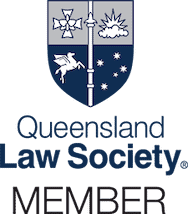If you are searching for information on how pain and suffering is calculated in Queensland, you might be self-represented in a personal injury claim.
You may have even been told by an insurer, a lawyer or elsewhere that you should claim damages for the “pain and suffering” you have experienced because of your injury.
In this article we explain how pain and suffering is calculated within Queensland. But please be aware – this article is not legal advice and if you have a claim, you should seek advice about your potential entitlements.
What is pain and suffering?
Pain and suffering damages are also described as “general damages”. General damages is an amount intended to compensate a person for the injuries themselves.
The damages are for the pain, suffering and loss of amenities that a person has experienced and will continue to experience due to their injuries.
In calculating a person’s pain and suffering, a Court may have regard to a number of factors including:
- a person's age
- a person's degree of insight
- life expectancy
- effects of a pre-existing condition
- difficulties in life likely to have emerged for the person whether or not the injury happened
- loss of enjoyment of life
- pain endured through treatment
What legislation applies to pain and suffering in Qld?
For injuries suffered in Queensland, pain and suffering is generally assessed using a scale of injuries under legislation.
The two (2) laws under which injuries are usually assessed in Qld are the:
- Workers’ Compensation and Rehabilitation Regulation 2014 (Qld) (WCRR);
- Civil Liability Regulation 2014 (Qld)(CLR).
(the Regulations)
The WCRR applies to workers’ compensation common law claims and the CLR applies to most other claims (e.g. public liability and motor vehicle accidents).
In a small number of cases, damages should be assessed according to common law and not the Regulations. That is, with reference to caselaw about the value of the pain and suffering damages, instead of the Regulations.
How is pain and suffering assessed in Qld?
The Regulations set out items under which injuries are categorised. The items describe both the nature of the injury and its severity (e.g. Moderate Brain Injury, Minor Hand Injury).
The items grade injuries on a scale of 0 to 100, giving them an Injury Scale Value (ISV).
An ISV of zero (0) represents the least serious injury and an ISV of 100 represents the most serious of injuries.
Car accident compensation Qld - pain and suffering
If you have a car accident compensation claim in Qld against a CTP insurer, pain and suffering is assessed under the CLR.
A CTP insurer may offer an amount of car accident compensation for pain and suffering, however, it is important to note that in Qld, you can recover compensation under a number of different heads of damage.
WorkCover Qld common law payouts - pain and suffering
For WorkCover Qld common law payouts, pain and suffering is assessed under the WCRR.
The amount claimed for pain and suffering is assessed in a different way to the lump sum offer made by WorkCover at the end of a statutory claim.
Injury Scale Vale (ISV) Table Qld 2023
Below is a short form Injury Scale Value Scale Table for injuries occurring after 1 July 2023. The table demonstrates how damages significantly increase for ISVs of a higher value.
Not all ISVs are shown in the table below. Each ISV from 0 to 100, has its own value. The ISVs for injuries occurring prior to 1 July 2022, are lower in value because ISVs increase slightly, every year.
The middle column shows dollar values for the ISVs under the CLR. The end column shows amounts for ISVs under the WCRR for workers’ compensation common law claims.
| ISV | CLR | WCRR |
|---|---|---|
| 1 | $1,780 | $1,675 |
| 5 | $8,900 | $8,350 |
| 10 | $19,300 | $18,470 |
| 15 | $31,500 | $30,270 |
| 20 | $45,450 | $43,685 |
| 25 | $61,050 | $58,900 |
| 30 | $78,500 | $75,905 |
| 40 | $118,600 | $114,785 |
| 50 | $163,700 | $158,415 |
| 60 | $211,800 | $204,950 |
| 80 | $317,500 | $307,405 |
| 100 | $436,100 | $422,060 |
Calculating pain and suffering in cases involving multiple injuries
To assess pain and suffering, it is necessary to identify all accident related injuries and then identify the category which has the highest ISV range. The injury category with the highest ISV range will see that injury described as the “dominant injury”.
Where a person suffers multiple injuries and the maximum ISV for the dominant injury is inadequate to compensate the person, the may claim an uplift on the ISV. The uplift is generally 25% but may be as high as 50%.
Pain and suffering settlement examples
Example 1 – whiplash injury
Jan suffered a whiplash injury to her cervical spine in a motor vehicle accident on 2 July 2021. Radiology performed after the accident revealed no injury and that she had a normal amount of age-related degeneration. She underwent six (6) sessions of physiotherapy which were funded by the CTP insurer and her symptoms largely resolved within six (6) to 12 months.
Jan’s injury would possibly be classed as a minor cervical spine injury, which is Item 89 under the CLR. The Item has an ISV range of 0 to 4. The range of general damages to which she may be entitled is $0 to $6,520.
Example 2 – lumbar spine injury
John suffered an injury to his lumbar spine at work on 1 February 2021. Radiology performed after the incident revealed that he suffered a lumbar spine fracture, involving compression of his vertebra which was greater than 25%.
John’s injury may be described as a serious lumbar spine injury, which is an Item 90 under the WCRR. The Item has an ISV range of 16 to 35. The range of general damages to which he may be entitled is $30,130 to $86,310.
How do you prove pain and suffering?
Provided that you can establish that the other party was at fault, a claim for pain and suffering may be proven with:
- evidence from treating health care providers about the treatment required and the symptoms reported;
- a person’s own evidence about their experience of their injuries; and
- an expert report from a specialist experienced in providing independent medicolegal evidence to Courts.
Is there a limit to the amount you can claim for pain and suffering?
Yes. In Queensland, the current limit on damages payable for pain and suffering in motor vehicle and public liability accidents occurring after 1 July 2022 is $414,000 under the CLR.
For workplace accidents, the maximum payable for accidents after 1 July 2022 is $400,655 under the WCRR.
There is no limit on pain and suffering damages payable under a common law assessment.
What is not pain and suffering?
It is important to understand that there may be other amounts that you are entitled to claim for your injuries.
For example, damages for pain and suffering do not compensate you for:
- Loss of income or earning capacity in the future;
- Past and future medical expenses; or
- Past and future paid or unpaid care and assistance.
A damages settlement is “once and for all” - what this means
If you have received an offer to settle a damages claim and you are self-represented, it is important to appreciate that a properly finalised personal injury settlement is “once and for all”. That is, once you settle your claim you will not be able to claim any further amount for any injuries or symptoms which you have experienced as a result of the event.
Considerations
Individuals with personal injury claims are usually entitled to compensation under several heads of damage – not just pain and suffering. You should not settle a personal injury claim without first obtaining legal advice.
For advice regarding a personal injury occurring within Queensland, contact us on (07) 3067 3025 to book a free initial telephone consultation with an Accredited Personal Injury Law Specialist.
To read more about our experienced team, click here.
Appointing Denning Insurance Law to represent YOU
Are you struggling with a personal injury claim and unsure of your entitlements? Don’t settle for less than you deserve! At Denning Insurance Law, we understand that individuals with personal injury claims are entitled to compensation under several heads of damage – not just pain and suffering. That’s why we’re here to provide you with comprehensive legal advice that will ensure you receive the compensation you’re entitled to.
Before settling your personal injury claim, it’s crucial to obtain legal advice from a reputable and experienced legal team. Our highly experienced team at Denning Insurance Law includes an Accredited Personal Injury Law Specialist who will be dedicated to helping you navigate your personal injury claim.
If you’re in Queensland and require advice regarding a personal injury, contact us on (07) 3067 3025 to book a free initial telephone consultation. We’re here to provide you with the support and guidance you need during this challenging time.
At Denning Insurance Law, we’re not just personal injury lawyers – we’re your one-stop solution for all your compensation and insurance law needs. With our team of experts, you can rest assured that no aspect of your case will be missed.
Our services include personal injury claims, income protection and Total and Permanent Disablement insurance claims, property damage insurance claims, National Injury Insurance Claims, and statutory claims for compensation. We pride ourselves on our success in achieving the best possible outcome for our clients, and we’re confident we can do the same for you.
Don’t just take our word for it – see why we’re the preferred choice for many by exploring just some of our successful outcomes. With Denning Insurance Law, you can expect exceptional service and the best possible outcome for your case. So why settle for less when you can choose Denning Insurance Law for a comprehensive approach to your personal injury claim? To learn more about our experienced team, click here.





